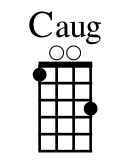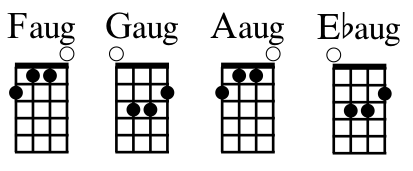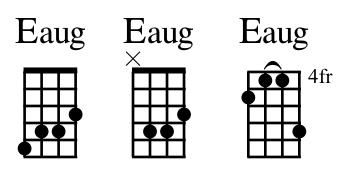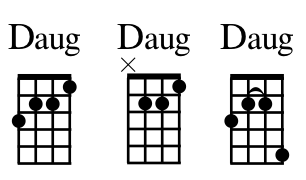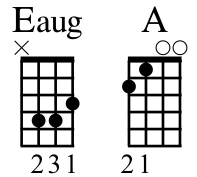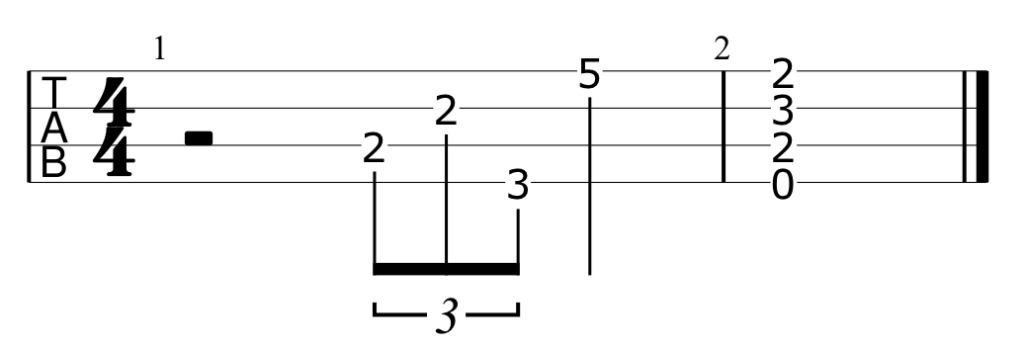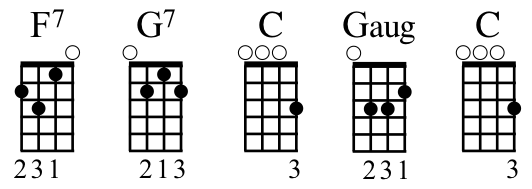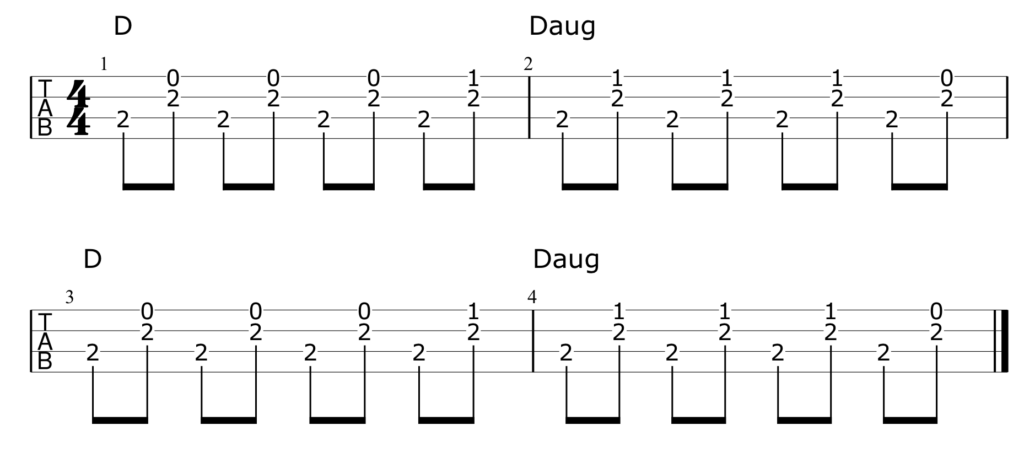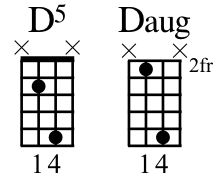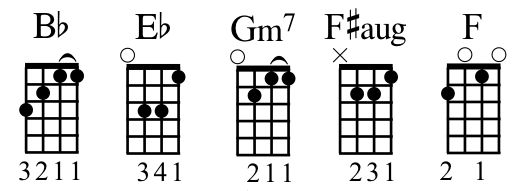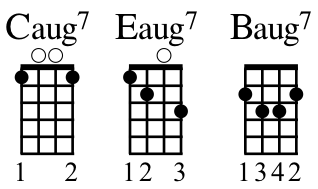Following on from the What’s the deal with sus chords? post, here’s a post demystifying another strange but highly effective chord type: augmented chords.
The Basics
On chord sheets you’ll usually see augmented chords represented by aug or +. So C augmented would be shortened to Caug or C+.
Augmented chords are very similar to the major chord shapes you’re familiar with. The only change is moving one note up a semitone (i.e. one fret higher). So to change C into Caug the g-string changes from open to the first fret to give you this:
Similarly Faug, Gaug, Aaug and Ebaug are all just one note away from their major counterparts:
If you’re on the ball you’ll have noticed that Gaug and Ebaug are exactly the same. As are Faug and Aaug. Not only that but the Gaug shape is also Baug and Faug is also C#aug. Because all the notes in an augmented chord are an equal distance apart, the same works for any augmented chord: each chord shape can be used as the augmented chord of any of the notes it contains. For example, the Caug chord shape contains the notes C, G# and E so it can be used as Caug, G#aug or Eaug.
As usual, the E chord brings up a few problems. You could play it the first way shown below but that’s a little fiddly. The easiest thing to do is mute the g-string entirely (either with the edge of your middle finger or by bringing your thumb around the neck) to create the second chord shape. Another alternative is to fret the A-string, 7th fret to create the third chord shape.
These chord shapes are all moveable so, for example, you could move them down two frets to create Daug chords:
Uses of Augmented Chords
Augmented chords sound disgusting. Compare these two progressions. In the first the progression is a perfectly nice F – G7 – C and the second is F – G7 – Caug.
If you’re anything like me your lap will be covered in vomit after listening to the second one. But when you use it properly that sound makes it very powerful in a chord progression. It propels the progression forward by making you itch for the augmented chord to resolve into something more relaxed.
Intros
Augmented chords’ mixture of suspense and melancholy make them a great opening chord. For example, The Beatles’ Oh Darling starts with an Eaug before settling into an A.
This move that’s regularly used in blues songs. A classic example is T-Bone Walker’s Stormy Monday where the notes of a Daug chord are picked out before the song moves to the root chord of G.
In theory terms, this is augmenting the V chord. This is the safest chord to augment since it’s the most tension-filled chord in most progressions anyway and will give a nice push back to the root chord.
Turnarounds
Augmented V chords also crop up at the end of blues turnarounds to add flavour to the usual sound. Here’s a typical C blues turnaround with the final G replaced by a Gaug:
And here it is added to a blues shuffle example from my Blues Ukulele ebook:
Two-Chord Progressions
It doesn’t take much to make augmented chords into an interesting progression. Here’s the intro of ABBA’s Mamma Mia which just switches between D and Daug:
The tension and release of switching between the augmented root and the root chord is so compelling you make it the majority of a song. Eddie Money’s Baby Hold On spends the entire first minute and a half switching between D and Daug. And Eminem’s Lose Yourself is composed almost entirely of a riff switching between D5 and Daug.
Chromatic Movements
Another place augmented chords crop up is in progressions that make use of chromatic notes. For example, both Led Zep’s Kashmir and Bowie’s Life on Mars both have chromatically rising notes set against otherwise static chords. The “Film is a saddening bore…” section of Life on Mars uses this trick twice in a row:
And throws in another augmented chord in the chorus because it’s one of the great chord progressions of all time:
Jonathan Coulton’s Chiron Beta Prime combines two tricks by switching between A and Aaug in the intro and incorporating Aaug into a chromatic line in the chorus.
Augmented 7 Chords
It’s not just straight major chords that can be augmented. Augmenting a 7 chord is doubly effective. Adding even more tension into the chord. This is why I listed Caug7 as one of my favourite ukulele chords.
You can find examples of the use of Eaug7 in Rebecca Sugar’s What’s the Use of Feeling (Blue)? and Cole Porter’s So Nice.
And Baug7 in Mariah’s All I Want for Christmas Is You.
